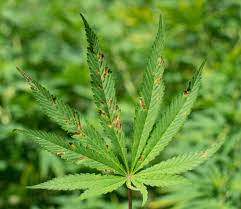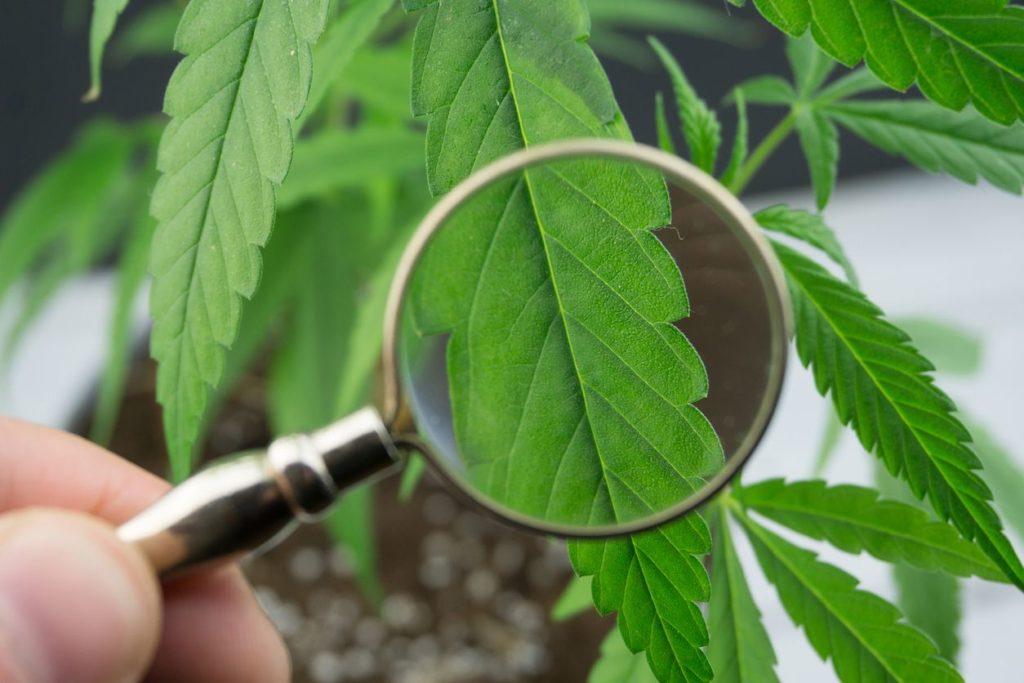Cannabis
Calcium Deficiency in Cannabis: Causes, Symptoms, and Solutions
Calcium is an essential element that every cannabis plant needs for healthy growth and development. It plays a critical role in regulating water uptake and metabolism and providing cell wall strength. However, calcium deficiencies are a common problem that can cause severe damage to your plant if left untreated.
The most common cause of calcium deficiencies is low pH levels at the roots, and It’s important to address this issue promptly since calcium moves slowly through the plant and tends to stay put in the leaves where it’s been absorbed. Neglecting to address the deficiency can severely impact the plant’s growth and overall health.
In this article, we’ll delve deeper into the importance of calcium for cannabis plants and explore the various symptoms of calcium deficiency. We’ll also provide practical tips on preventing and treating this issue, so you can ensure your plants stay healthy and vibrant throughout their growth cycle.
Symptoms Of Calcium Deficiency Cannabis
The signs of a calcium deficiency typically appear on new or actively growing leaves, which are crucial for plant expansion. Symptoms may include dead spots, crinkling, mottling, small brown spots, stunted growth, and distorted new leaves. If you’re growing cannabis, knowing how to spot calcium deficiencies and take steps to prevent and treat them is essential.
Maintenance of PH
Calcium is a vital nutrient for cannabis plants, as it helps maintain healthy cell walls and overall plant structure. However, a calcium deficiency can occur if the pH levels at the roots are too low. When the pH is too acidic, your cannabis plant cannot absorb calcium effectively through its roots, resulting in brown spots on leaves and unhealthy new growth.
To avoid a calcium deficiency, it is essential to maintain the correct pH for your growing medium. In soil, calcium is best absorbed through the roots when the pH is between 6.2 to 7.0, while in coco or hydro, the pH range should be maintained between 6.2 to 6.5 for optimal absorption. Monitoring the pH levels regularly and adjusting them as needed to prevent a calcium deficiency is essential.
If you suspect a calcium deficiency in your cannabis plant, flushing your system with clean, pH-balanced water containing cannabis-friendly nutrients with calcium can help restore pH levels and remove any nutrient salts affected by calcium uptake. It’s important to note that damaged leaves may not recover, so paying attention to new growth is key to identifying signs of recovery.

Addressing Calcium Deficiency in Cannabis Plants: Key Steps to Take
If you’re growing cannabis plants, it’s important to keep an eye out for calcium deficiency. This deficiency can have a negative impact on your plant’s growth and overall health. While it can take up to five weeks for visible symptoms to show, there are several steps you can take to treat the issue.
- It’s important to test the pH of your medium. If the pH is too low, your plant won’t be able to utilize the nutrients in the soil effectively.
- Check the temperature of your grow room. If it’s too cold, your plant’s transpiration rate may be low, which can lead to a calcium uptake issue.
- High relative humidity (RH%) and poor airflow can also negatively affect transpiration rates, leading to a lack of calcium. Therefore, finding a VPD chart online and adjusting your set points to achieve the most desirable climate is important.
- Foliar sprays can also be effective in treating calcium deficiency. Make sure to pH the calcium mix to 5.8 before spraying, as this pH level will help with absorption.
Moreover, adding a surfactant can help it stick to and stay on the leaves. Adding the correct amount of calcium to your nutrient feed is also important, as some genetics may require more or less. When plants are struggling with calcium deficiency, a calcium drench can also be given to help kickstart their recovery.
Cal-Mag Supplement
As a cannabis grower, it’s essential to understand the importance of providing your plants with the proper nutrients. One nutrient often overlooked is calcium, but it’s crucial for the healthy growth and development of your cannabis plants. While giving your plants too much calcium is rare, avoiding going overboard is essential, as an excess of this nutrient can lock out other essential nutrients. This is why many growers supplement with a calcium-magnesium (Cal-Mag) supplement to ensure their plants receive the proper balance of nutrients.
There are several different types of cannabis calcium supplements available on the market, each with its unique benefits. One popular option is calcium nitrate, a highly soluble form of calcium that your plants can easily absorb. Another common choice is calcium carbonate, which is less soluble but can provide a slow release of calcium over time. Other options include calcium chelates, calcium sulfate, and calcium chloride.
It’s important to note that calcium deficiencies often appear alongside magnesium deficiencies, which is why many Cal-Mag supplements contain both of these nutrients. You should expect new healthy growth within a week when supplementing with Cal-Mag and correcting the pH. While the old leaves may not recover, new growth should be green and healthy.
Dolomite Lime Treatment

Properly supplementing your cannabis plant with the right amount of calcium is crucial for healthy growth. However, if you’re an organic or soil grower, finding the right source of calcium can be a challenge. Luckily, a product called “Dolomite Lime” is an excellent source of calcium and magnesium. This organic supplement works slowly over a few months and helps maintain the soil’s neutral pH, essential for optimal cannabis growth.
To use Dolomite Lime for cannabis, mix 6-7 teaspoons of fine dolomite lime per gallon of soil when growing indoors. If you’re mixing soil for a 5-gallon container, add 30-35 teaspoons of dolomite lime. After thoroughly mixing the soil and dolomite lime, lightly water it with pH’ed water of 6.5, and let the soil settle for a day or two before checking the pH and adding plants.
For outdoor gardening, follow the manufacturer’s instructions for dolomite lime application. It’s crucial to note that dolomite lime should be used with care and not overused, as excess calcium can lock out other essential nutrients.
Without a reverse osmosis system, testing your water for PPM or TDS levels is essential. Use a cheap PPM or TDS meter to identify if the levels are too high. A 300-400 ppm or less threshold is acceptable, and anything higher should be filtered. By supplementing with Dolomite Lime and correcting the water’s pH, you can expect to see new healthy growth in your cannabis plants within a week.
Conclusion
While treatment can help save calcium-deficient plants, it’s important to use preventative measures to avoid deficiencies in the first place. By monitoring pH levels, temperature, relative humidity, and nutrient feed, you can help ensure your cannabis plants get the calcium they need for healthy growth.

